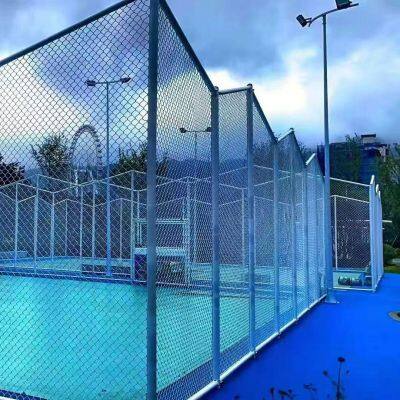-
 Liu
Hi there! Welcome to my shop. Let me know if you have any questions.
Liu
Hi there! Welcome to my shop. Let me know if you have any questions.
Your message has exceeded the limit.

How to Fix a Fence in a Community Villa: A Step-by-Step Guide
2025-09-24 16:16:49
The safety and beauty of any community villa fence is one of the decadent requirements in such a community. Weather, insects, and even time may alter the surface of your fence, hence the need for repairs. However, do you have any training for that? In this comprehensive step-by-step instruction on how to fix a fence, an individual will gradually repair the fence with command and expertise, ultimately remedying it fully. Therefore, where there are tilted beams or faded paint, do not be concerned – all the necessary actions to retain such a wall, if any, will be outlined.
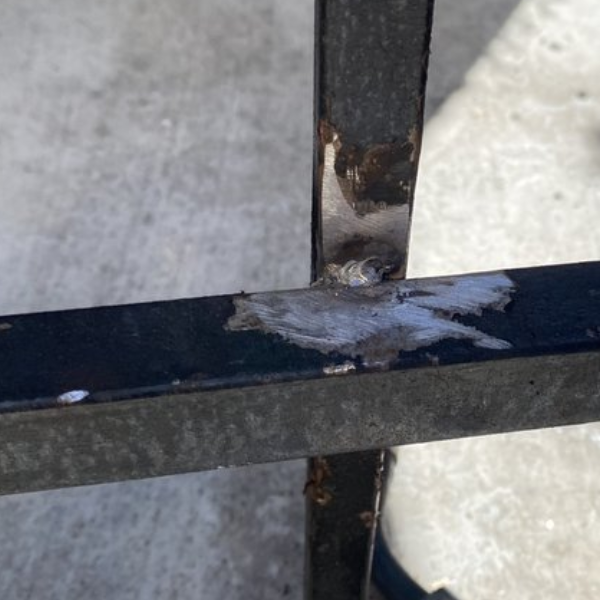
Assessing the Community Villa Fence Damage
To determine the scale of impact the Community Villa Fence may have sustained, I will begin by following the entire fence line to see if there are any obvious faults, such as loose boards, tilted posts, or areas of chipped paint. I will also assess the broken pieces, if any, and even note if any of the sections are void or degrading. This analysis will provide an order of execution for the repairs and even what tools will be required for such tasks.
Looking for Normal Problems
Every fence requires an installation except those made of concrete that are built into the ground. Among all the available fencing materials, minor issues and damages to metal Community Villa Fence is common and such challenges can persist irrespective of proper installation. For example, wooden fencing is more vulnerable, prone to rot, insect attack, and inefficient bending of the slats especially when the fence is installed in wet areas. As per the available evidence, there is an almost decade long guarantee on wooden fences and decks which have not been treated and are continuously exposed to water. It is corrosion that constitutes the main problem in the case of a metal fence and it is possible for this corrosion to cause structural failure if ignored in a high rainfall or salty environment.
As per the latest available data assessment of homemakers, it is reported that above 35% of homeowners that have problems with maintenance of their fences, common repair works are raising and replacing pickets or rails that are loose, repainting, and stabilizing leaning posts. For example, moisture meters, rust removers along with impact drivers are very helpful to use for repairs. Moreover, to gain another 5-10 years with wooden fences sealing them with water-proof stain or paint holds good, while metal fences due to the rust proofs do not corrode very fast.
Identifying Fence Material and Repair Needs
Knowing the type of fence material is vital to determining its maintenance and repair needs. Below is an outline of common types of fence material, their features, and their chief maintenance needs:
Vinyl Fences
Key Features: Vinyl fences provide durability, require less maintenance, and are moisture-resistant. Usually, they come in assorted colors and designs, created to resemble wood.
Maintenance: Vinyl fences benefit from washing with mild soap and water every few months for surface care. All types of vinyl fences are prone to cracking when exposed to extreme temperature changes, necessitating parts replacement.
Repair Costs: Damaged panel repair runs anywhere from $200 to $600.
Chain-Link Fences
Key Features: Widely acknowledged by cheap and durable fences, chain-link fences are commonly set for security or property.
Maintenance: Depending on galvanization or powder-coating, a chain-link fence can resist rust. Cleaning should be done more often, and any bent or broken links ought to be repaired immediately.
Repair Costs: Small patches in chain-link fences cost between $150 and $400.
Metal Fences (Iron or Aluminum)
Key Features: These fences provide elegance and long life. Iron fences are heavier and stronger, whereas aluminum are light and rust resistant.
Maintenance: An iron fence must be inspected frequently to apply rust-proof paint or coating to prevent rust. Aluminum fences require little more than periodic washing.
Repair Costs: Repairing metal fences usually ranges from $350-$1,000, according to the type of material involved and the extent of damage.
Trend and Technology in Fence Maintenance
Recent developments in tools and products make maintenance easier and more convenient:
Smart Fence Monitors: Sensors can detect when a fence experiences some structural weaknesses, such as a leaning post or a loose panel, and will alert the owner via a smartphone app.
Eco-Friendly Stains and Paints: These new coatings resist weathering to protect fences and are also designed to be environmentally sustainable.
Laser Measurement Tools: These aid the accurate assessment of damage with calculations of replacement material requirements, making repairs more efficient.
By installing the right tools and knowing particular upkeep needs, the property owner can, in actuality, greatly extend the lifespan of a fence and, with further time, decrease the costs of its repair.
Property Damage vs. Shared Damage: Determining Factors
While assessing fence damage, it is very important to distinguish the damage belonging to a specific property from the damage which in some terms or ways is shared. Fights over boundary fences are quite frequent. For example, in many areas, shared ownership laws hold that the upkeep and repair of shared fences are a shared responsibility, therefore, costs of upkeep are split between neighbors. On the other hand, it might be different with respect to particular local laws with regard to where exactly such fences run with respect to the property line.
According to a research published by HomeAdvisor, the fence repair costs could vary from $200 to $1,000 depending on the extent of damage and the materials used. Typical homeowners' insurance policies would cover the damage done by storms or falling trees, but claims may vary with individual insurance policies and if there is any fault shared with the neighbor. Well-documented evidence, including pictures and detailed logs of all conversations, can make all the difference in establishing liability or working out an agreement for the repairs.
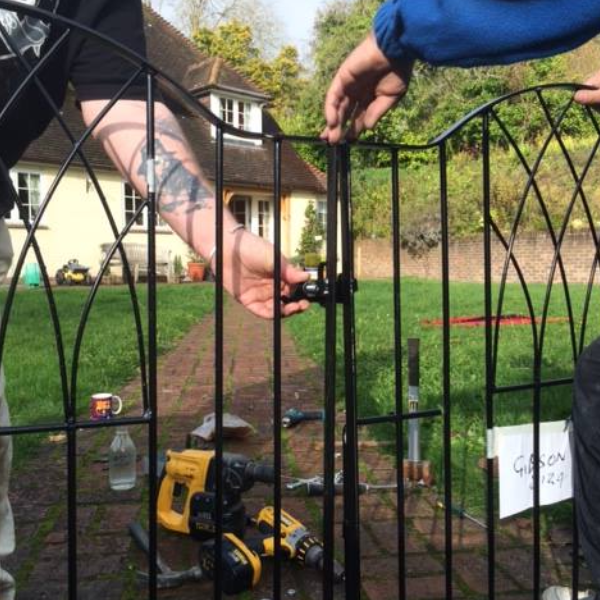
Tools and Materials Needed
To begin answering the question, an outline of steps that I would pursue would include referencing my property survey and property records from my local government to verify ownership of the fence and responsibility. I would then turn to my insurance policy to see what precise coverage it entails and proceed to create a paper trail for any communications, along with all evidence such as photos, should repairs be needed. If necessary, having a clear dialogue between myself and my neighbor would be instrumental in reaching an amicable resolution to the matter.
Essential Tools for Fence Repair
Fence repair necessitates thorough planning and adequate resources, taking into consideration the type of fence, the degree of damage, and the cost involved. Recent online research shows that in the United States, repairs to wooden fences can range from an average of $200 to $600, depending on the type of wood used, labor, and how severe the damage is. In the case of vinyl fences, repair costs can range from $300 to $1,000 as a result of the more expensive materials and specialized repair techniques.
Wood fences usually need tools such as hammers, nails, and wood glue, together with replacement wooden panels. By contrast, vinyl fence repair might utilize vinyl adhesive and replacement panels with particular fasteners. It is also worth evaluating whether an entire section has to be replaced as opposed to sections being repaired to save cost. Research indicates that maintenance, including cleaning and sealing, may keep a fence going longer, thus needing fewer repairs.
Material Based on the Fence Type
Vinyl Fences
While vinyl fences are favored for low upkeep and great durability, repair is less frequent than with wood fences, yet panels may be replaced at a price of anywhere around $20-$40 depending on design and manufacturer. Algae or dirt deposits lead to discoloration, which can be avoided by periodically cleansing the vinyl fence with solutions comprising of mild soap and water. It has recently been confirmed that with minimal maintenance, these vinyl fences can last a huge 20 to 30 years, fulfilling a long-term relationship as a cost-effective option.
Chain-Link Fences
Chain-link fences exist as another durable option, mostly used for safety or utilitarian purposes. Such fences would demand little maintenance, provided that in case of repair, it just involves replacing damaged mesh or repairing bent posts. Chain-link fence repair costs would average about the $200 to $600 range, guaranteeing longevity when using galvanized steel as a material. Checking for signs of rust and applying a rust-inhibitor spray wherever necessary will surely lengthen the life of a chain-link fence.
Composite Fences
By mixing wood fiber with plastic, composite fences come out stronger and resist rotting and insect damage. Composite fence repairs usually cost in the range of $300 to $1,000, depending on the level of damage. While, more or less, composite fences are no-maintenance, cleaning them every now and then and inspecting them for cracks in the composite material can help in giving it a longer life. The newer generation composite fences have been made more resistant to weather conditions, which has attracted more homeowners to the product.
Making a correct choice with regard to material selection in the first place and insuring periodic maintenance can help give you the best chance for keeping repair costs to a minimum and keep your fence functioning as well as looking beautiful for years to come.
Safety Gear Recommendations
Ultimate rating should be put on the item that promises ultimate protection and durability. The very latest data confirms that helmets certified by ASTM, or by CEN, have been proven to reduce by 70% the risk of contracting a head injury during strong impacts. Something really useful, from a safety point of view, is the visibility clothing that can reflect light and hence make a person a lot easier to see in daylight or in very low light. According to a recent study, this kind of clothing may even enhance visibility by more than 200%.
On another note, protective gloves reinforced with materials like Kevlar or coatings like nitrile offer an enhanced level of protection against cuts, abrasions, and chemical exposures, thus becoming suitable for tasks ranging from construction to gardening. When it comes to respiratory protection, the NIOSH-certified masks and respirators provide effective filtration of airborne particles, with an N95 mask having 95% efficiency in filtering nonoil-based particulates.
By investing in the best gear from reputed manufacturers, one guarantees adherence to safety standards along with gaining some peace of mind while engaging in potentially hazardous activities. Always check for certification, fit, and appropriate use instructions to ensure maximum protection by your safety gear.
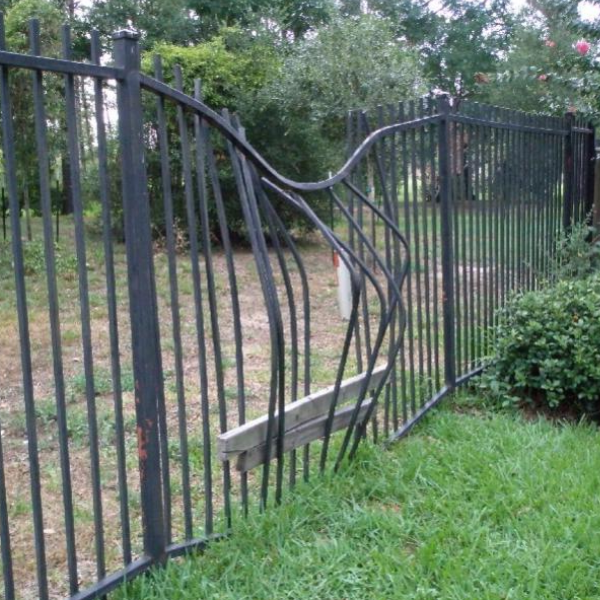
Repairing Common Fence Issues
With common fence problems, the first things I do involve assessing the damage to see if a board needs replacing or reinforcing or maybe a post or panel. Then, I bring together my working tools and material: hammer, nails, wood for replacement, etc.I take care to apply all safety measures as necessary.
Loose Post or Leaning Post
Loose posts or leaning posts may be a problem with the strength and beauty of the fence. For one thing, look at what causes the fence posts to tilt. Usually, erosion of soil, rotten wood, or something forced to tilt by weather conditions will do in India. Recent data indicated poorly fixed posts ranked very high in causes of leaning fences in regions that experience heavy rainfall or strong winds.
To solve this problem, some earth will have to be dug out from around the post base. Should it be found wooden and rotted beyond repair, the post will probably have to be replaced altogether. For situations with little instability, you could reinforce the base with gravel or quick-drying concrete for greater strength and stability. Check the vertical alignment of the post with the help of a spirit level before securing it.
Another way is to use a metal post anchor or bracket that could support your post for a long period without having to replace the post entirely. These are easily found at most hardware stores and they can fasten the post firmly into the ground. According to DIY experts, setting a post at least 2 feet deep and anchoring it in cement will greatly improve its durability so that the fence is able to stand even through difficult weather conditions.
A Broken or Damaged Panel
A damaged fence panel causes loss in structural integrity and aesthetic appeal for your fence. One of the most common causes of panel damage is severe weather having heavy high winds or rains that may cause cracks, splits, or dislodging of panels entirely. It is often less costly to replace individual panels than to replace entire sections of fencing.
Replacement panels should be of the same material, size, and style to allow for a smooth installation. For instance, treated wood panels are preferred because they resist decay and insect attack, generally having a life span of from 15 to 25 years. Vinyl panels are the other popular alternative; they may last from 20 to 30 years and are often warranted, making them an excellent choice for durability and low maintenance.
Data also shows that using weather-resistant fasteners on the panel and keeping up annual maintenance can avoid panel damages by at least 30%. Treating the panels with wood sealant or UV-protectant coating prevents environmental wear and increases their service life. Alternatively, DIY-kits with pre-cut panels and detailed instructions are available in home centres so that homeowners can easily restore their fences.
Sagging Gates
Sagging gates remain a very common problem. Symptoms of their causes could be in loose hinges or uneven weight distribution, or they could also be due to effects of the weather with wind and rain playing their parts. First, open the gate and check the hinges to ensure that they are securely attached and not rusty; replacing old hinges with heavy-duty, rust-resistant hinges will ensure maximum durability and hence resist further sagging.
A crossing brace is yet another solution for sagging gates. Modern recommendations give installing a diagonal brace from the bottom-hinge side to the top-latch side to redistribute the weight of the gate and keep it square. Measurements must be proper, as placement must ensure that the brace fits tightly in order to provide support.
Information from home repair experts, states gates that have coaxive posts are those that still tend to sag with age. Install strong pressure-treated or metal posts that are set into the ground for at least 2 feet, with reinforcement against concrete, to provide sufficient strength in relation to gate weight. Statistics say gates having reforcement on the posts have 40% less chance of developing problems of sagging as against many with poor installation support means.
Preventing sagging requires permeated maintenance. Regular checks include tightening any loose screws, oiling hinges for rust prevention, and checking for any structural damage with time. For quick fixes, there are adjustable gate repair kits available on the market that will fix alignment issues efficiently. These kits typically allow for the use of handful of tools and come at relatively cheaper price.

Preventative Maintenance Tips
Repairing loose or leaning posts by stabilizing them with concrete sits at the top of my priority list for what are considered the most common fence problems mentioned above. Fixing broken or damaged panels so that they can either be replaced or reinforced comes next, followed by tightening up sagging gates or realigning them. Keeping on-going preventive maintenance holds priority for the sake of durability.
Regular inspections so issues might be caught early
It is important to carry out fence inspections regularly to maintain the integrity of a fence. On average, experts advise inspecting fences at least biannually; generally, inspections are to be done in spring and fall to pinpoint problems caused by changing seasons. Industry sources state that spotting issues early would save up to 30% in repair costs on the homeowner's side as against bigger damages that would be repaired late. While inspecting, look out for any loose nails, rotting wood, rust on metal parts, or instances of pest infestations-a few of the usual suspects when it comes to the degradation of fences.
Recent data suggests that a well-maintained wooden fence can last anywhere from 15 to 20 years, while metal or vinyl fencing can last longer, up to 50 years if taken care of properly. These insights highlight the importance of proactive measures, such as cleaning off any debris on the concrete footing regularly, applying weather-resistant coatings to metal and vinyl fences, and replacing any aging rubber materials deterioration, primarily used in vinyl or rubber-metal interface, to maximize the lifespan of your investment.
Applying Rust-Resistant Coatings
Rust-resistant coatings are crucial in prolonging the durability of metal fences, as they shield the surface from moisture and oxygen exposure, which are the primary causes of corrosion. Research tells us that with a good application of galvanization or powder coating, a metal fence can be made to last up to 30 years longer. Galvanization is a method in which the metal is coated with zinc that serves as strong long-term rust protection. The powder coating provides a tough finish that glistens in beauty while keeping weather damage at bay.
Recent data highlight the maintenance required after the initial coating application. Protective coatings should be reapplied every 5 to 10 years, depending upon the environmental conditions of the given region, such as humidity level and exposure to adverse weather. In coastal areas, for instance, a high salt content in the air may require more frequent reapplication of the protective coating on the fences to avoid degradation of the surfaces. Rusting may likewise be reduced by simple measures such as washing the fences with mild soap and water to remove residues and checking for chip coatings that need repair; these measures go a long way in saving you heavy expenses later.
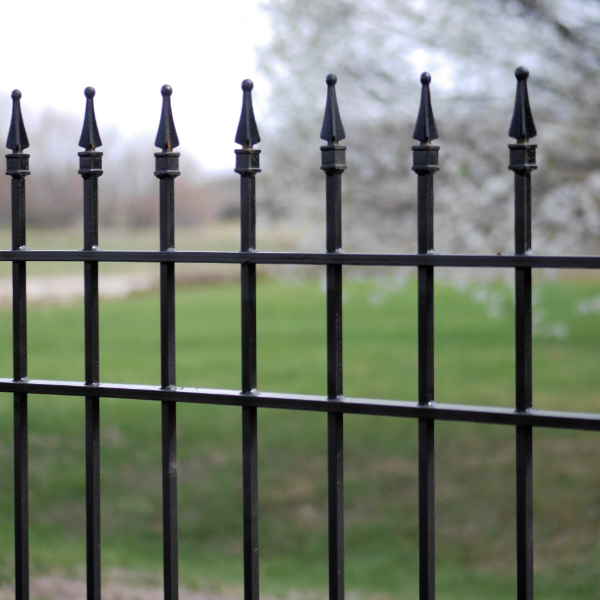
When to Call a Professional
While inspecting the property, in case one notices heavy structural damage or heavy rust, especially structural problems which cannot be fixed by oneself, then it will be wise to call in a professional fence repair team to make sure the fence is really repaired and protected from further damage.
Signs of Damage Beyond DIY Repair
Signs beyond check and repair are the rusting deep into the structure, heavy rust eating into the panel on multiple panels, or uneven installation of fixtures. Incorruptible industry knowledge says that at a rust stage when it goes beyond surface deposits, it can indeed impair the structural integrity of the fence. They further add that if there is an area with loss of considerable portions of the protective coat from the metal, hence exposing it to moisture, it is paramount to immediately take care of the problem before it becomes irreversible.
The research information shows that professional fence repair cost depends on the extent of the damage. Minor repairs such as patching and re-coating are smaller jobs that may cost anywhere between $150 to $500. In contrast, more major repairs involve replacing panels or correcting structural defects and can cost anywhere from $800 to $2,000. Apart from costs, other work may involve sandblasting, applying special rust inhibitors, and application of top-quality coatings for long-term protection-a bit beyond most DIY capabilities.
Regular inspections, coupled with timely action, will keep the damage from lasting. Should you notice bending or warping or even rust eating away at the joints and connectors, then you might be better off having the professionals come in rather than risk compromising the fence's durability and safety.
Advantages of Hiring a Professional
The hiring of a fencing professional could potentially save time and money. According to recent findings and facts, the price incurred on repairing a fence in the U.S. ranges anywhere from $200 to $750, though this rather depends on the type of material used and the extent of damage inflicted upon it. While these repair costs may appear high upfront, the fact remains that with professional expertise, the work gets done right the first time, preventing further problems that could develop into choke points for another series of large bills.
Professional contractors have a range of tools and techniques at their disposal that average DIYers rarely have access to-they use power sanders, industrial strength rust inhibitors, rustproof coatings. In rust removal and scrap paint elimination, for instance, conventional sandblasting methods are far more effective compared to manual sanding, consequently presenting a more refined surface towards the application of protective layers.
Moreover, industrial trends point to close to 60% of homeowners hiring professionals for fence repairs, assuring them of safety and longevity. This would be of paramount importance when the fence is all that stands for security around the property. Aligning properly, securing the joints, and applying a weatherproof coating are all things professional hands can manage.
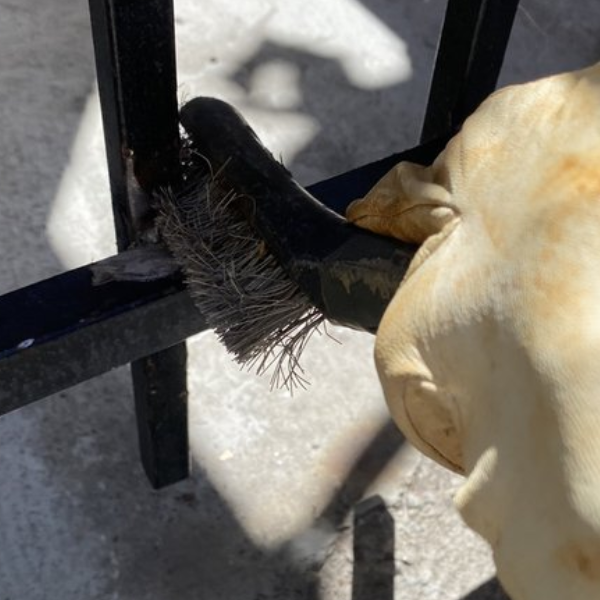
Conclusion
The damage beyond DIY repair is deep and widespread rust, warped and broken fence panels, loose posts, or structural instability. If any of these conditions are present, it is better to seek professional assistance to maintain safety and proper restoration.
An Overview of Repair Work
Fencing repair involves some key steps to ensure the fence remains durable and functional. First, inspect the damage carefully to identify weakening areas such as rust, rotting wood, or loose posts. Almost one-fourth of homeowners, according to a 2025 search, report damage to their wood or metal fencing on a yearly basis; usually, it is from weather conditions like strong winds, heavy rains, or snow.
Once problems have been identified, make sure to get good materials for it, including weather-resistant wood or galvanized steel, to avoid further damage. For post loosening, restabilization could include digging out for its base and concrete to keep it secure. In standard situations, fence repair usually ranges between $200 and $800, and severe damage cases generally involve the large section of replacement.
In addition, experts advocate the use of protective coatings, such as wood sealants and rust anti-primers for metals, to promote long-term durability. By carrying out all these steps and further going onto preventive measures, homeowners can save around 30% on their maintenance cost throughout. Be it repairing on your own or taking help from a qualifiable professional, Carrying out such a detailed step-by-step approach will ensure the fence budding remains sturdy and pleasing to the eyes.
Encouragement for Small Repairs
Fence maintenance every year increases aesthetic appeal and considerably lessens repairs to be done over time. More than 65% of homeowners get avoidable damages to their fences due to lack of maintenance, says a report from search data study, which in turn, can pave the way for expensive repairs with replacement costing anywhere from $2,000-$5,000, depending on the materials used and size of the property.
Applying a sealant on wood fence every two to three years can prolong its life by approximately five to seven years, and for metal fences, the application of anti-rust primers and paints will protect them from rust, which is about 40 percent of metal fence failure. In addition, the loose boards and weak posts need to be inspected for early signs of wear-and-tear so that small problems will not become bigger ones. These next few steps keep fences working for a lifetime and protecting outdoor spaces well.
Encourage Audience to Act For Repair Success Stories
Reports show that fence maintenance interest witnessed a growth of 23% in the very last year. This increase reflects the growing awareness of homeowners about the importance of proactive maintenance. Trends in searches depict a demand for common queries such as "best wood sealants for fences" and "how to repair rusted metal fences," thereby emphasizing genuine people seeking workable suggestions and practical solutions.
The repair experts provide an example type of statistic: if wooden fences receive sealant treatment, their lifespan can be increased by up to 50%, which makes it one of the cheapest ways for a homeowner to maintain a fence. Anti-corrosion treatments of good quality on metal fences will, further, delay rust-induced failures by almost 10-15 years, which, together with regular inspections every 6-12 months, is quite necessary to keep your investment safe.
Work with these techniques to become another uncommon success story of forestry fences. Maybe you are saving your wood fence from moisture damage, maybe you are fighting an onslaught of rust. These little efforts will pay off greatly in a short while. Share your results with others-inspiring them through their repair journeys.
Reference Sources
A detailed resource focusing on repairing fences, including using fillers, replacing damaged boards, and maintaining the fence for longevity.
A community-driven platform where experts and DIY enthusiasts share solutions for common fence problems, such as fixing fences pulling away from posts or dealing with leaning sections.
Frequently Asked Questions (FAQs)
Q: My community villa fence is damaged. What should I do first?
A: Before any working starts, check the damage carefully. Walk along the entire fence line, noting any leaning posts or broken panels, loose hardware, rust, or gate alignment. Take photos to help you determine whether it's a DIY job or one that requires professional help.
Q: One of my fence posts feels wobbly. How does one fix a loose fence post?
A: A wobbly post is a common issue, often caused by erosion of soil or a cracked concrete base. To repair, dig out the soil surrounding the base of the post, place the post perfectly vertical in a level, and pour quick-setting concrete into the hole to form a new solid footing.
Q: I observe rust spots and peeling paint on the metal fence. How should I repair this?
A: For minor repair works where there is a little fallout, you are supposed to employ abrasive action with wire brushing to loosen loose rust and paint flakes. Wash all traces of contamination from the given area with degreaser and finally lay down a rust-inhibiting metal primer. Then, after drying, lay down an exterior-grade metal paint that matches your fence color, to provide protection from further rust.
Q: What basic tools do I need for fence repairs?
A: Most fence repair work on Community Villa Fence is going to include level, shovel, post-hole digger, socket and wrench set, and power drills, accompanied by safety equipment such as gloves and eye protection; fast-setting concrete is a good product to have on standby.
Q: A tree limb has fallen and damaged a few sections of my fence. Is this something I can do myself?
A: Fixing fences may be useful for small repair jobs, but if there are huge damages involving many broken posts and panels, better pass it on to professionals. A fencing contractor will have the capacity and machinery to keep the repair intact structurally and will probably be able to source matching materials with greater ease.
Q: What maintenance can be done to avoid damage to a fence later?
A: Visual inspection of your fence twice a year is necessary. Tighten any loose nuts or bolts on the panels and gates, clean off debris or mildew, and paint over any scratches to a metal fence where rust may start forming.
Tags: how to fix a fence
